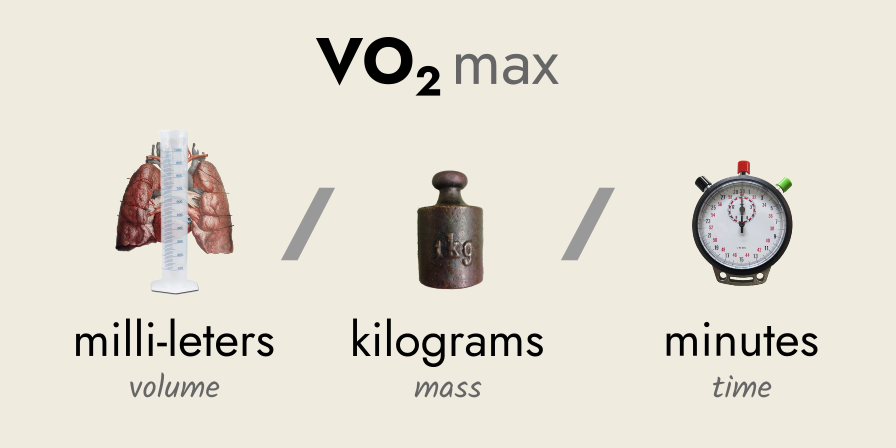
VO2 Max
A multipart rate used to measure the maximum amount of oxygen a person can use during maximal exercise.
The term“VO2 max” is derived from three abbreviations:
- “V” for volume,
- “O2” for oxygen, and
- “max” for maximum.
It is used to test fitness in athletes, but also in a healthcare setting, to assess patient’s cardiovascular function etc.
Measuring VO2 Max
For athletes, measuring their VO2 max is a fun experience.
They strap a mask on your mouth and nose, one hooked to a machine measuring your breathing.
Then, they stick you on a treadmill, and keep upping the speed until you cannot keep up—the point of physical collapse, basically.
(They don’t go so hard on hospital patients, for obvious reasons.)
VO2 max is a multipart rate, with three completely different terms:
- milliliters (mL) of oxygen consumed per
- kilograms (kg) of body weight per
- minutes (min) of time.
If 90,000 mL of oxygen were consumed by an athlete (who weighed 80 kg), and it took 20 minutes exactly to exhaust them, we can record the following multipart rate: 90,000 mL / 80 kg / 20 min
The International System of Units uses the “rational number and grouped units” format, with the multipart rate written as: = 90,000 ÷ 80 ÷ 20 mL/kg/min = 1,125 ÷ 20 mL/kg/min = 56.25 mL/kg/min to give a result in terms of unit values.
